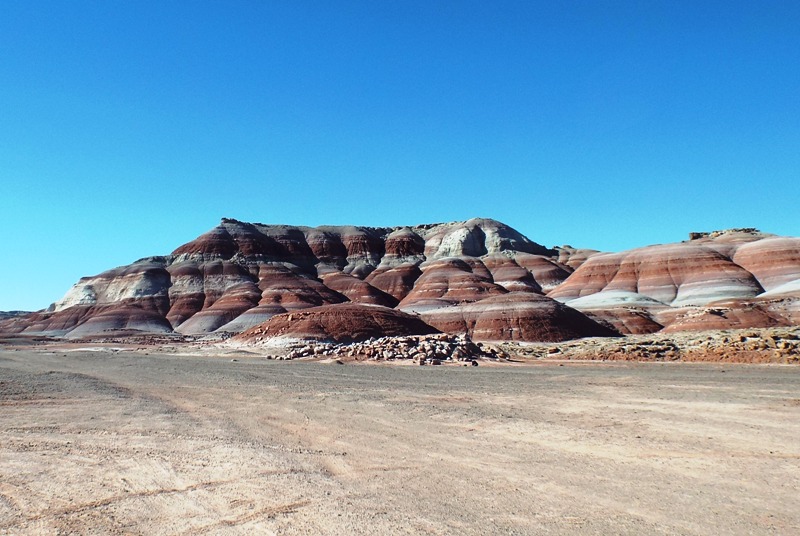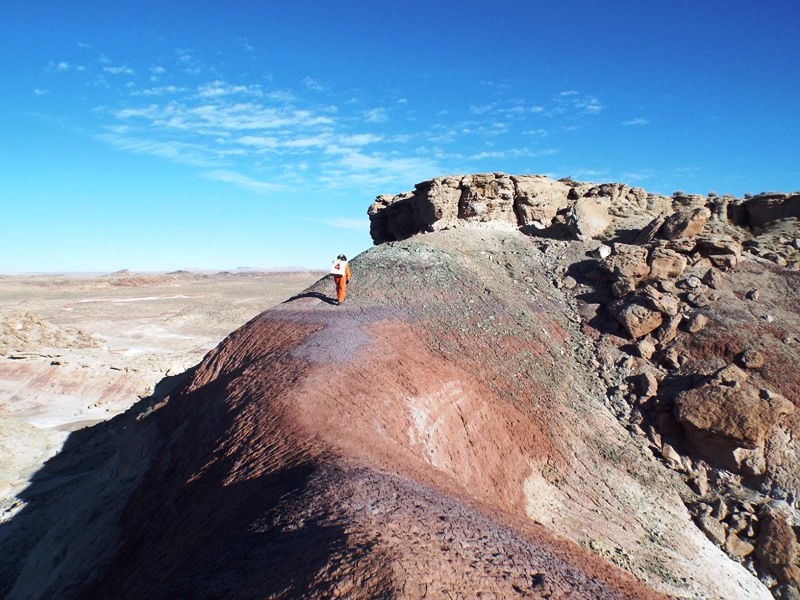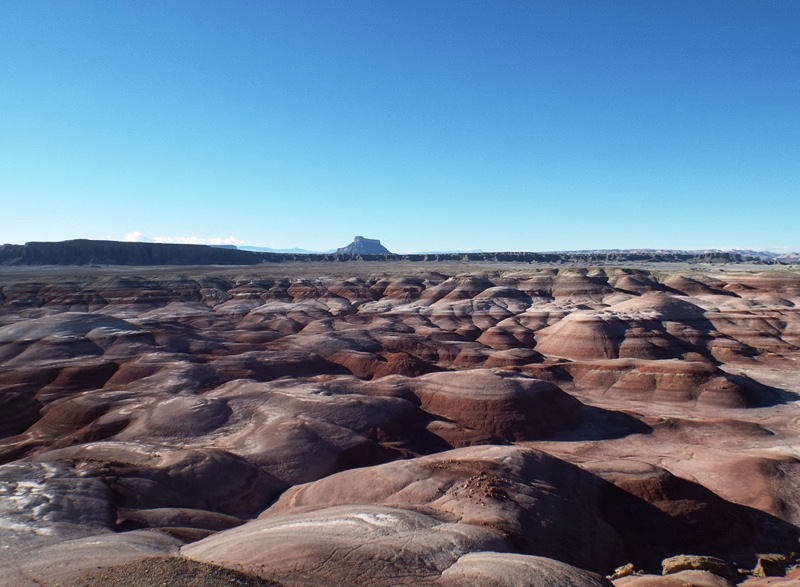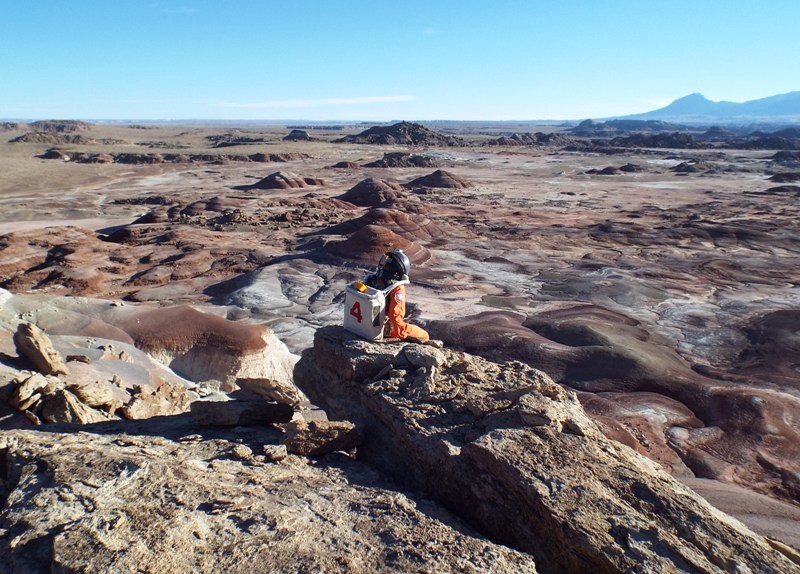EVA Narrative – December 6th
EVA Narrative
Jon Clarke

North Ridge
Yesterday Alex and I took the Phobos rover to the foot of North ridge. This ridge dominates the northern skyline of the station. I have admired this fill on all three previous visits, as well as every day since we have been here. But I have never climbed it – until now. Time on the EVA was constrained by the limited batter power of Alex’s astronaut user interface-the SUIt. So we could not afford to dawdle. We found a promising looking climbing gully and then a connecting ridge and scrambled to the top. Warm work, but the panorama was worth it.

The final ascent.
There was a magnificent view in all directions. To the east there was a range of snow capped mountains to the south were the Henry Mountains, also mantled in snow. Nortnwe could see the San Rafael Swell and west was Skyline Rim, Factory Butte and the snowy Aquarius Plateau beyond. In the middle ground were the red, brown, white, green and purple strata, beehive shaded hills, and sinuous ridges of the Pinto Hills.

View to the west, Factory Butte in the distance beyond Skyline Rim.
Geologically I had also wanted to determine whether the resistant capping of North Ridge was of the Cretaceous Dakota Sandstone or whether it was if a sandstone or conglomerate lens within the Morrison Formation. I was specifically hoping to find the distinctive fossils of the Dakota Sandstone, the oyster known as Gryphea. Failing that I was hoping to find the almost as distinctive trace fossils (mostly burrows) of the Formation. Unfortunately I found neither, just cross-bedded conglomerates and sandstone. There were a few non-descript burrows but these, combined with the bimodal current directions, indicating reversing flow directions, suggest a shallow marine environment, and thus the Dakota Formation. This is contrast to the more or less uni-modal current directions of the river deposited Morrison Formation. Also the conglomerate sandstone cap was at the same elevation as Hab ridge to the west, consistent with it being the Dakota Sandstone. This is often the case in geology, there are no clear-cut answers, just sifting through and weighing multiple competing alternatives.

View to the north.
Low power in Alex’s SUIt forced us to return sooner than we would have liked, but it was a most successful and enjoyable EVA.




